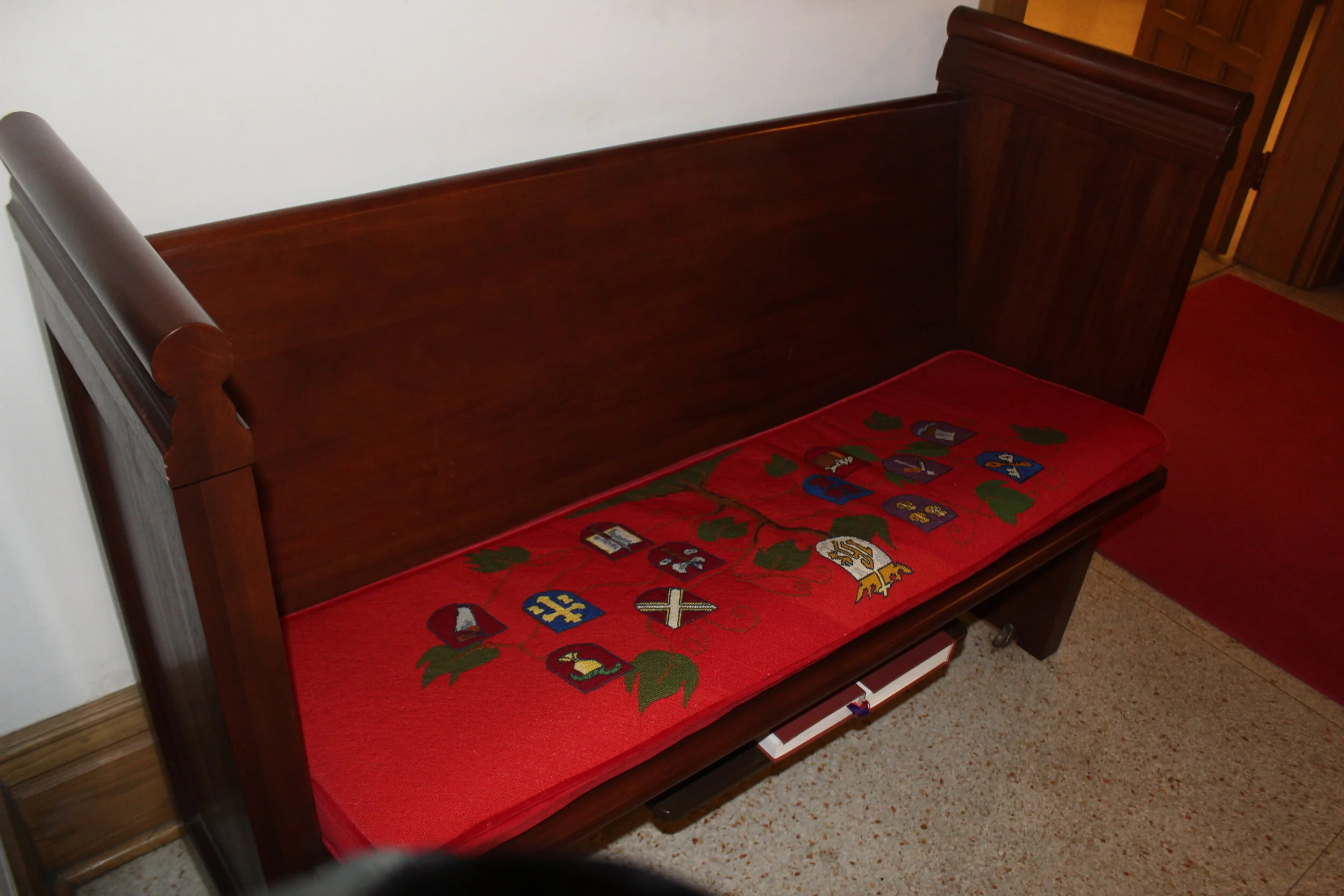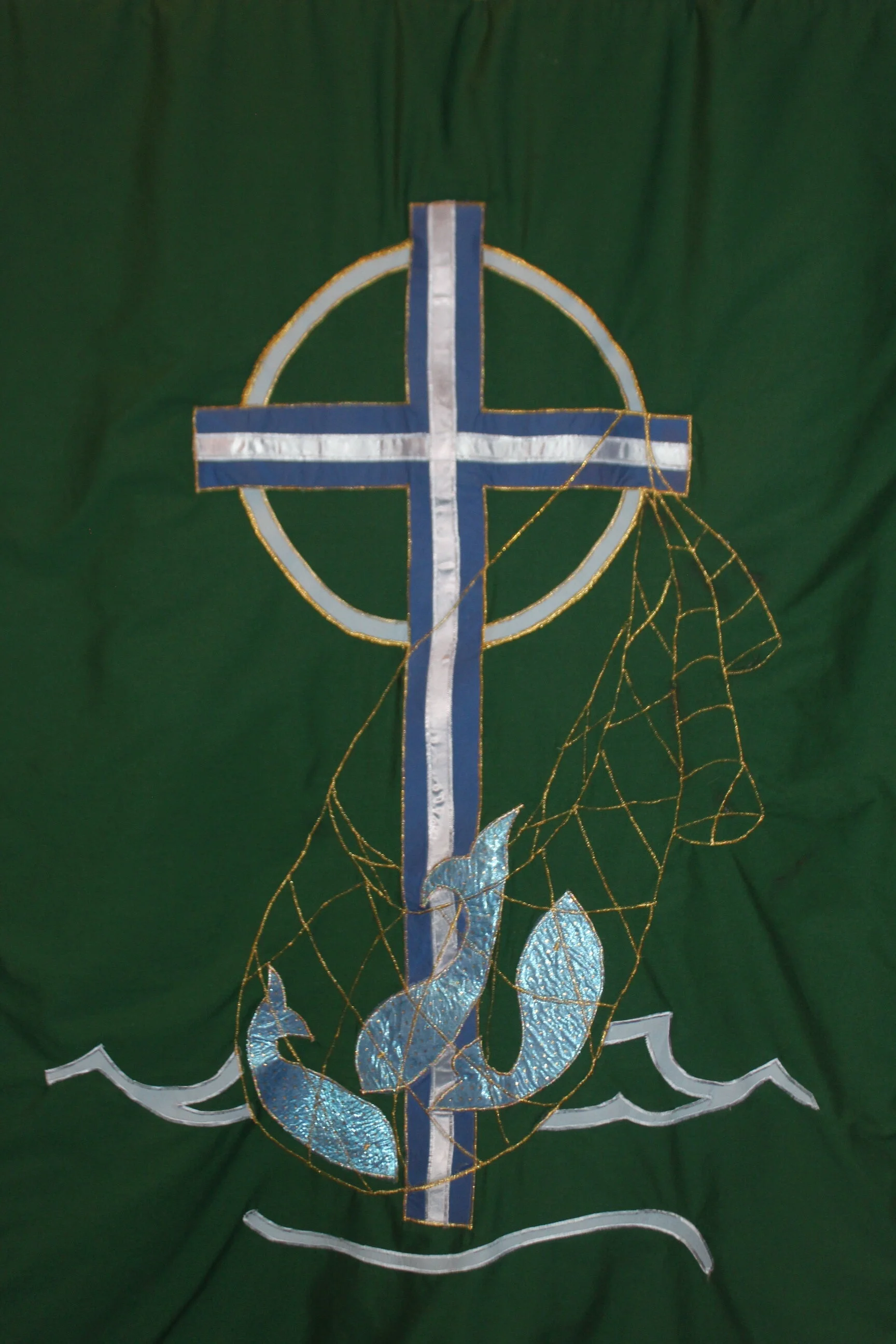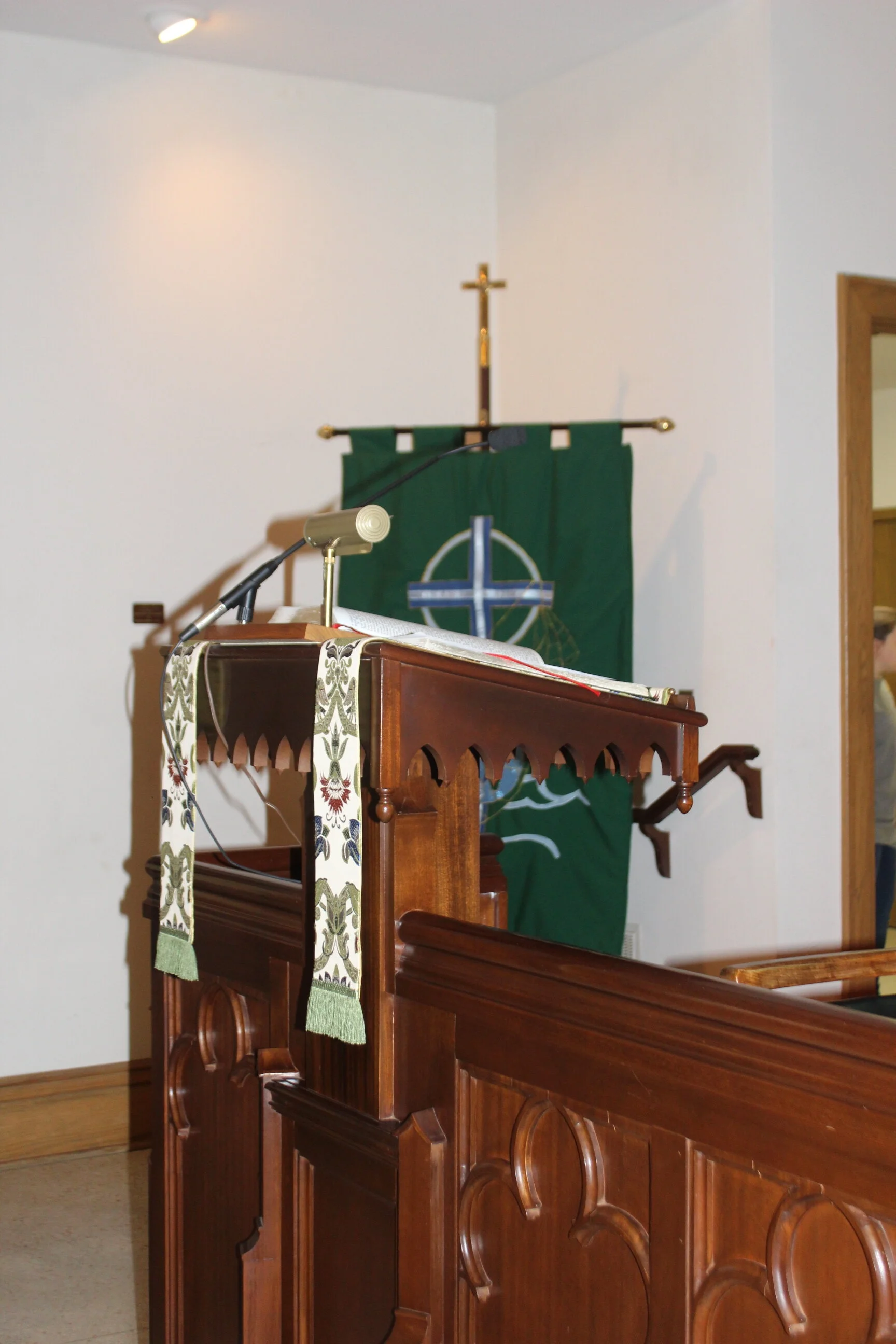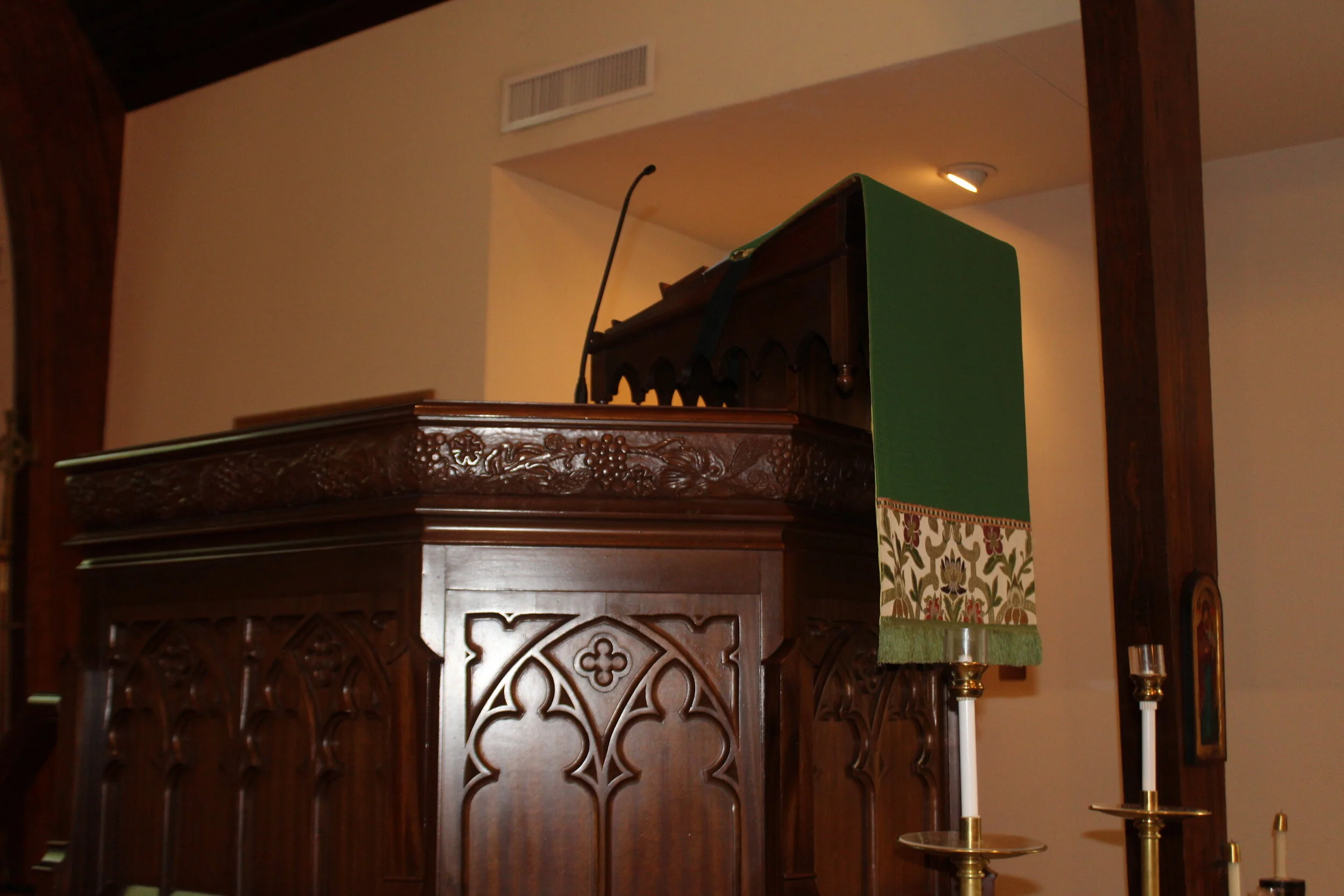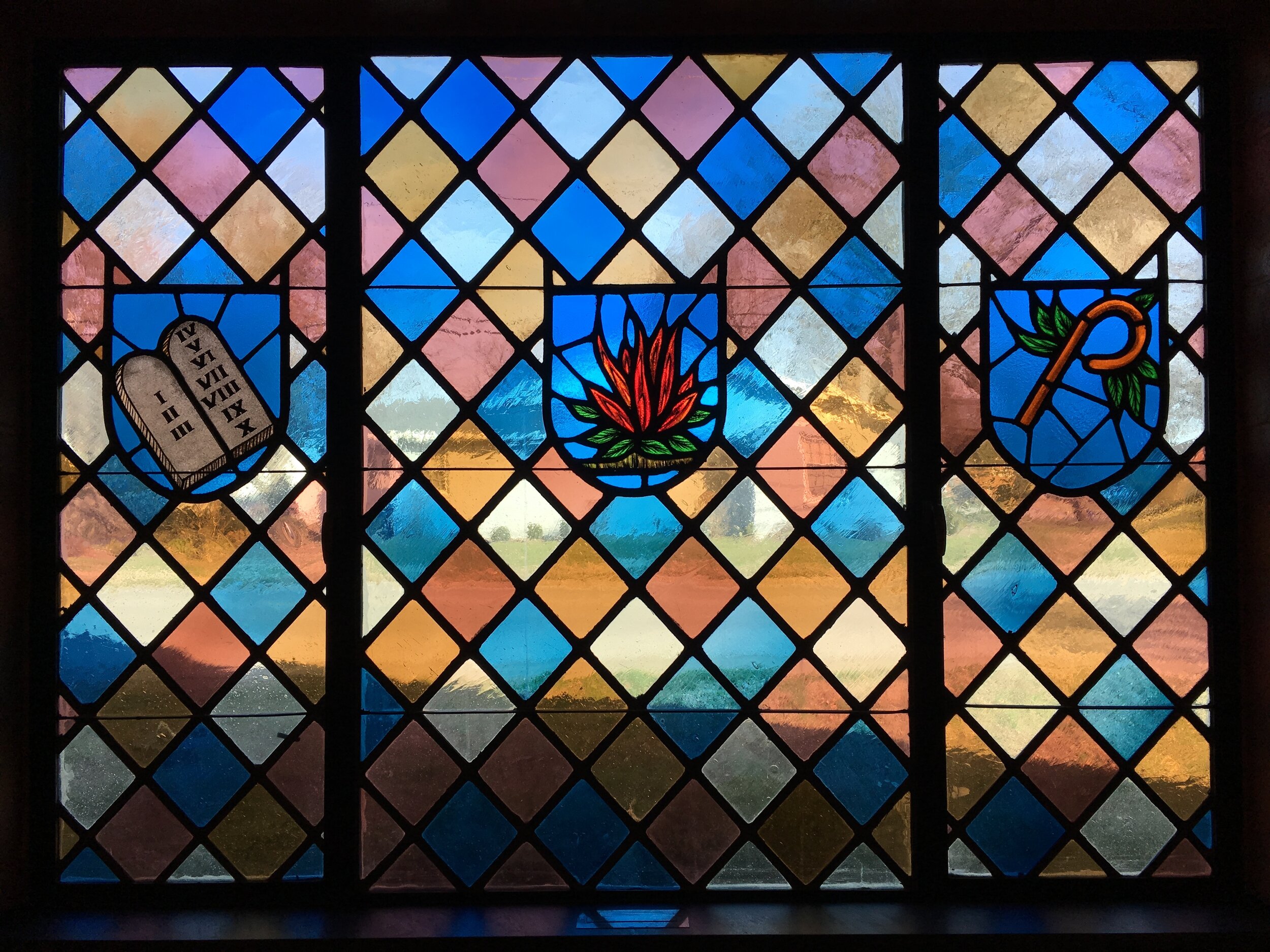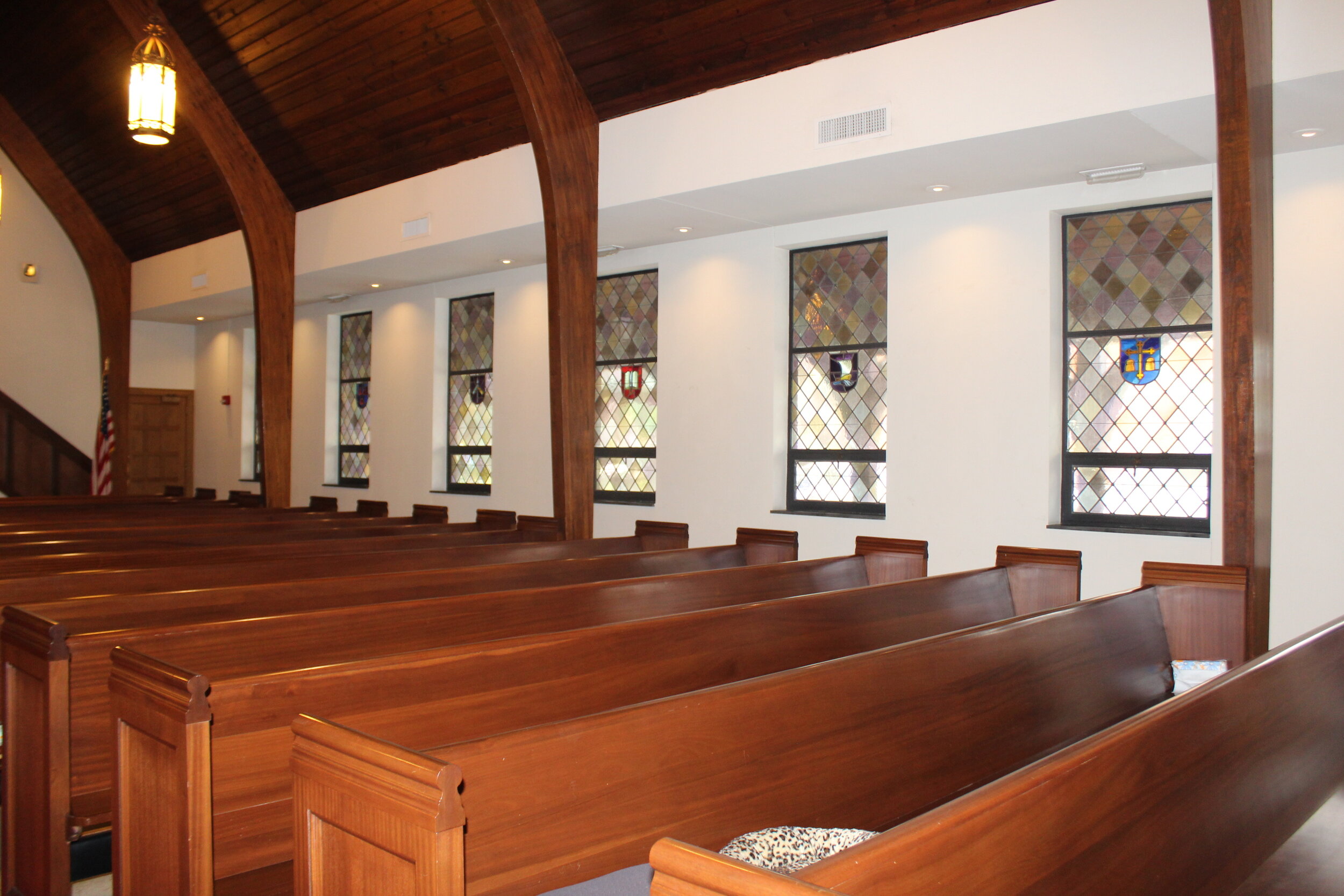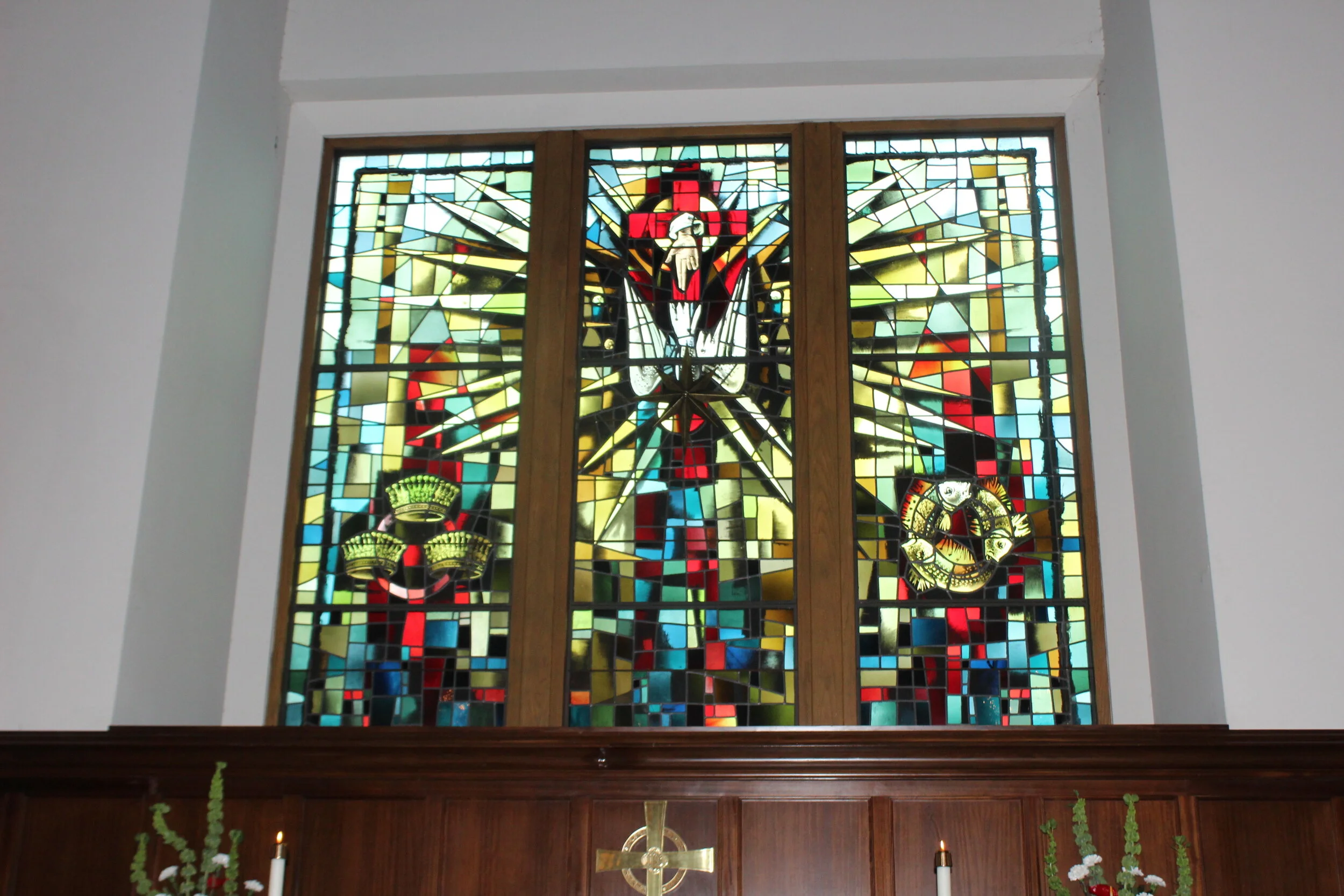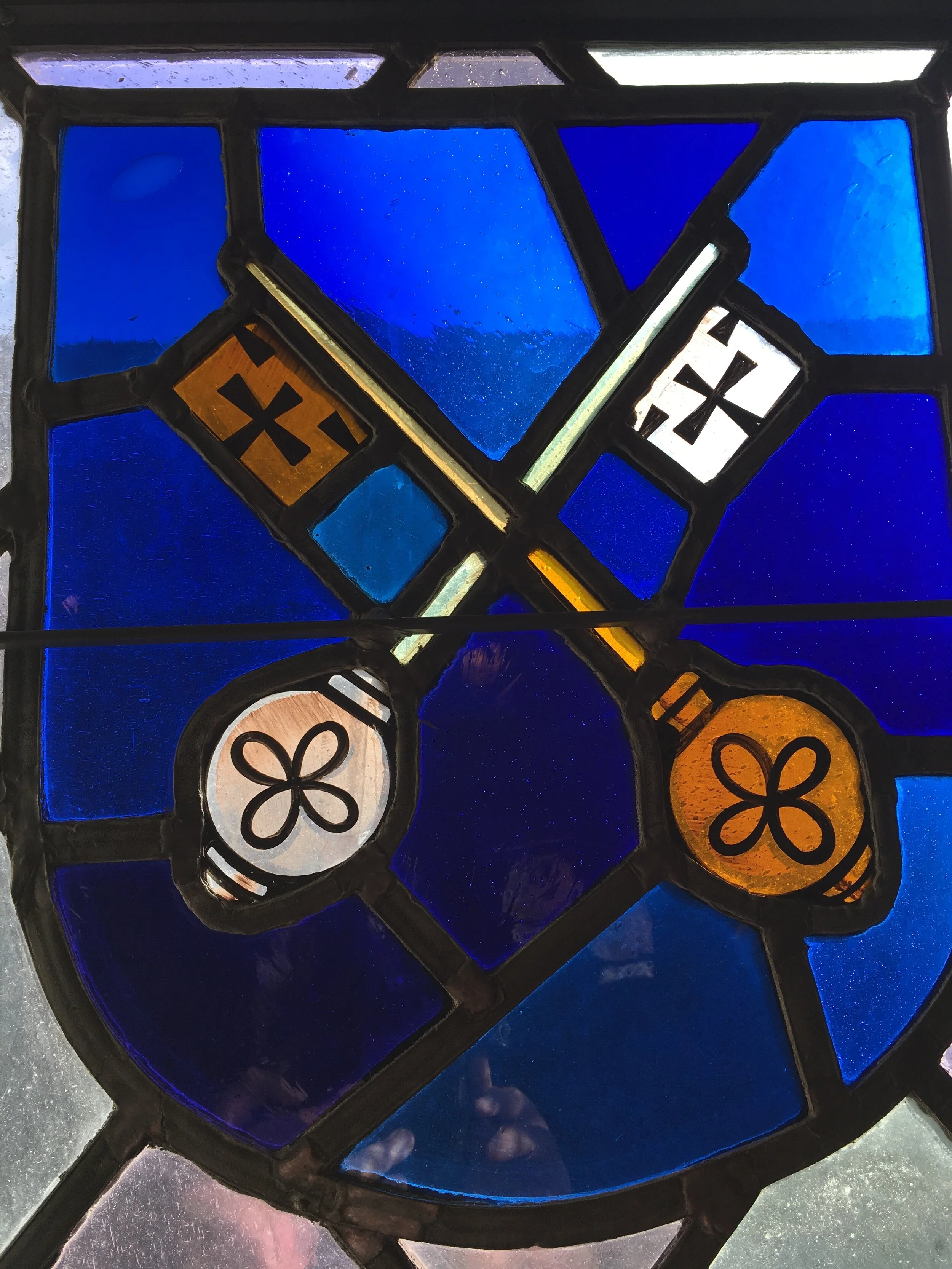
Trinity Episcopal Church
The Episcopal Diocese of Kentucky was established in 1829. Benjamin Bosworth Smith, a native of Rhode Island, was consecrated the first Episcopal Bishop of Kentucky in 1832. Twenty years later, on 12 June 1852, he visited Owensboro and initiated a mission called Trinity Church. Trinity Church’s first cleric was the Rev. Francis M. Whittle, who served St. Paul’s Episcopal Church in Henderson. Whittle was consecrated bishop of the Episcopal Diocese of Virginia in 1868. He remains the only priest associated with the parish to be consecrated a bishop. In 1860, Bishop Smith officiated at Trinity Church’s first baptism: Adolph C. Stiplen, born in 1853 to A.G. and Susan Stiplen, was baptized on 31 May 1860. Bishop Smith also officiated at Trinity Church’s first confirmation: Anne Nasley Murray was confirmed on 25 May 1862.
In the early years, the parish worshiped at several different Owensboro locations. In 1875, during the tenure of the Rev. B.H. Latrobe, Jr., property was purchased on Fifth Street. The following year, a beautiful church building was completed. The building on Fifth Street was deconsecrated by Bishop Charles Marmion in 1966. Sold by the vestry to the City of Owensboro, the building was placed on the National Register of Historic Buildings in 1970.
A cornerstone for the English Tudor-style building in which we presently worship on Ford Avenue was laid by Bishop Marmion on 21 April 1963. The building was first used for worship on 29 September 1963. Bishop Marmion dedicated the building on 31 May 1964. The architect Clifton J. Marshall designed the building. Marshall graduated from Owensboro High School before receiving a bachelor’s degree in architecture from the University of Illinois. He served on the faculty of architecture at the University of Illinois and the University of Kansas. After his death, Marshall’s book collection was bequeathed to the University of Kentucky, where he had served as University Architect.
The large stained-glass window over Trinity Church’s altar was designed and built by the French stained-glass maker, designer, and decorator Max Ingrand (1908-1969). Born in Bressuire, France, Ingrand spent part of his youth in Chartres, where he was fascinated by the stained-glass windows of its great cathedral. Educated at the École Nationale Supérieure des Beaux-Arts and École Nationale Supérieure des Arts Décoratifs, Ingrand learned the art of stained-glass from Jacques Grüber (1870-1936), the master glassworker in Nancy. In 1931, Ingrand established his own workshop. Among his important early commissions were the glass decorations for the luxurious Deco oceanliner, the Normandie, which launched in 1932, and the Palais des Musées d’Art Moderne (now the Palais de Tokyo) in Paris, completed in 1937. Throughout his stained-glass works, Ingrand integrated his love of medieval art together with a decidedly modern stylization. In 1954, he became artistic director of the Milano interior design company Fontana Arte, where he designed a variety of lamps, sconces, chandeliers, vases, ashtrays, candlesticks, glassware, and tables.
Ingrand created numerous church stained-glass windows from the 1940s through the 1960s. In some cases, he replaced windows in Europe that had been destroyed in the Second World War, including 43 stained-glass windows for the Nôtre Dame du Pré cathedral in Le Mans. In the 1950s, Ingrand constructed the largest stained-glass window in Europe, a 11,000+ square foot window in the Church of Saint-Pierre in Yvetot in the Normandy region of northern France. In the 1960s, Ingrand designed and installed the enormous mosaic at the Basilica of the National Shrine of the Immaculate Conception in Washington, D.C., which depicts the descent of the Spirit at Pentecost and afterward, reaching the four corners of the world: Europe, Asia, Africa, and the Americas. Ingrand’s work is also found in the world’s largest Middle East Roman Catholic Church, the Franciscan Basilica of the Annunciation, built in 1966 on the ruins of its Byzantine and Crusader antecedents, above the grotto venerated for centuries as the home of Saint Joseph and Saint Mary the Virgin, the Mother of Our Lord Jesus Christ.
In total, Ingrand designed windows for over two hundred religious buildings in Europe, the USA, Canada, and Brazil. In 1967, Ingrand left Fontana Arte and founded his own company, Verre Lumière, which was among the first to produce halogen lamps. Ingrand died in Paris in 1969, having been awarded the French Legion of Honor. Considered one of the greatest stained-glass artists of the twentieth century, he has been hailed by other designers for his masterful skill, innovative use of materials, and superb production practices.
Trinity Church’s pews, sanctuary fixtures, baptismal font, and reredos are made of African sapele wood. Sapele originates from West Africa, where the individual trees can grow up to an impressive height of 45 meters, with a trunk diameter that can almost reach 2 meters. Sapele is a deciduous tree only during the dry season in the West Africa, with leaves that can grow up to 10 centimeters.
The twelve beautiful stained-glass windows on the sides of Trinity Church include symbols of the apostles: Saint Mathias, a hatchet and two stones; Saint Peter, two crossed keys; Saint Andrew, an X-shaped cross; Saint James the Greater, three shells; Saint James the Lesser, a saw; Saint John, a gold chalice with a green snake; Saint Matthew, three money bags; Saint Thomas, a carpenter’s square overlaying a spear; Saint Bartholomew, a knife; Saint Jude, a ship; Saint Philip, a cross and two loaves of bread; Saint Simon, a book upon which rests a fish.
The needlepoint covers for the kneelers at Trinity Church’s Communion rail were designed by Biji Hill Baker in memory of her father. They were created by the women of the parish as a memorial to Tillie Rattray, who served as senior warden. In 1968, Sheba Quay Snyder gave funds for stained-glass windows to be installed in the Trinity Church chapel as a memorial to his wife Helen. The chapel’s windows were created by Willet Studios, which was founded in Philadelphia in 1898 by the artist William Willet and his wife Anne Lee. The windows depict the activities that take place within the chapel: Communion, baptism, prayer, praise, teaching, and marriage.
Trinity Church’s longest serving cleric was the Rev. Dr. Glendon Coppick. Born in Oklahoma, Coppick graduated from Texas Christian University and the Church Divinity School of the Pacific. He earned a doctorate in Sacred Theology from San Francisco Theological Seminary in 1987. Ordained a priest in 1955 by the Rt. Rev. C. Avery Mason, Coppick was rector and founder of the Church of the Good Shepherd in Dallas, Texas, where he served from 1955 to 1959. Coppick served as Trinity Church’s rector from 1959 to 1991.
During Coppick’s tenure at Trinity Church, Margaret Sue Reid, at the age of 28, became the first woman ordained to the priesthood in Kentucky. A year prior to her ordination, Reid served as assistant at Trinity Church as Kentucky’s first female Episcopal deacon. Raised in the United Church of Christ, Reid became an Episcopalian in 1970. She earned a Master of Divinity degree at Virginia Theological Seminary. Reid was ordained to the priesthood in Trinity Church on 18 June 1977 by the Rt. Rev. David B. Reed.
